At a time when the world is facing huge challenges - students, principals, teachers, staff and parents have begun their sustainable journey for "Ggreen" deal transition. This may sound very difficult and distant but the Slaveykov Municipal High School in Dobrich-Bulgaria has already transformed the way the thinks about the energy. We links renewable energy and energy efficient technologies with the transfer of competencies, values, attitudes and behaviours environmental education.
Проектът Net-Zero Schoolwas built around topics-Climate Resiliency (mitigation, adaptation), ecological footprint that linked with focus area challenges-Curriculum Sustainability, Community Awareness and Action with Renewable energy and Energy efficiency. It ensure high-quality learning experiences through transformative process that equips students,teachers, and school with the new opportunities and ways of thinking we need to achieve prosperity of life. Moreover, it engaged internal and external community in actions that walk the talk of sustainability, and contribute to a sustainable paradigm shift at the local level. The school's biggest issue in terms of energy usage were rising electricity costs so with collaboration with National Trust Eco Fund (NTEF), National Association of the Municipalities and Dobrich Municipality we was able to develop a transdisciplinary project to address climate challeges and began our sustainable 'Green Journey'. It's a holistic blend of smart, clean power technology and STEM education. This investment enabled the school to install renewable tech, energy efficient lighting and management system. Solar energy provides unique educational opportunities for students and raising awareness by classroom inspiration with eco-friendly education, learning beyond functionality. This way the success of the project come down to two key actions:Installation of clean energy innovation and transition-solar system with 66 PVT panels that produce electricity and heat water, managed them with "smart" Solar-Log devices; Light fixtures were replaced with LED lights and sensors, an eco-friendly solution to lighting. Inclusive STEM challenges-conducting a series of events such as trainings, workshops etc. initiatives with students, teachers on climate change, sustainable life, 4Rs eco-friendly conception etc. That helps us minimise the use of valuable natural resources and our carbon emissions we have completely changed the way we use energy and teach
Please highlight how the project can be exemplary in this context
The purpose of project is to encourage a more sustainable a community-centred transformation and ensure the way it enhances our quality of life. It meets the ambitious goals of sustainability, aesthetics and inclusion in an engaging inclusive education way.
The Net Zero challenge is an opportunity for tomorrow’s generation to take social action by tackling climate change where they live, and it supports educators in meeting their curriculum and careers objectives. The challenge is for students to help their community reach Net Zero.
The project provides a new stimulating transdisciplinary concept for the transformation of the educational environment, a functional net-zero model favors the simultaneous achievement of climate goals, quality of experience and physical and financial accessibility.
Small Decisions, Big Benefits and Key Achievements.
66 Solar PV and PVT panels produced clean energy throughout its life of over 25 years;
50% Reduction in electricity bills;
60% reduction in lighting costs;
120 tons of carbon emissions per year;
22 education and learning initiatives.
Please highlight how the project can be exemplary in this context
In terms of aesthetics and quality of living beyond functionality, the project demonstrates achievements in two areas - improved lifestyle through resource management and increased levels of responsibility and community involvement (teachers, students, staff, parents, municipal and state institutions, etc.) and created a sustainable school community, curriculum and culture through the use of own electricity which increases the motivation of the participants. The solar energy innovation and transition in Curriculum Sustainability, Community Awareness and Action in project Net-Zero will strengthen quality of the experience for people and of place. In the big picture of global challenges, solar energy diminishes the building’s reliance on traditional (and expensive) power sources. Improved quality of life for over 900 students 90 teachers 1500 parents staff.
Please highlight how the project can be exemplary in this context
Perceiving the potential for educational innovation in the energy-climate-education relationship is essential for strengthening democracy, equal opportunities, public participation, citizen engagement, co-design, accessibility, affordability, etc.. Increasingly over the last decade, renewable energy advocates, climate justice activists and social and environmental justice activists have joined forces to organize around a call for energy democracy. This call for energy democracy is at the heart of our innovative start-up and implies greater inclusion, equity and influence among the communities involved in the transformation of education and energy systems. The Net-Zero School decided to pursue solar power and clean energy, it is setting an example for the rest of the community to follow us. By decreasing power costs, the school can allocate budget for other purposes, such as creating better educational programs or investing in community improvement projects.
Please highlight how this approach can be exemplary
Energy-climate-education relationship is essential for project and gives the new ways to set incentives for a broad implementation of small scale projects by improved governance structures and increased efficiency of schools. Future generations learn how to contribute to a climate-friendly, sustainable city development. Activities involve the local community in shaping their future energy consumption patterns.
Since solar energy is still expensive to most bulgarian households, the inovative project exemplify the possibilities and the advantages of this renewable source of energy. Renewable energy provides a significant and growing number of jobs worldwide each year.
The actions we take today will reach far beyond the school gates, inspiring families and sparking community action to tackle the climate crisis. The living world holds answers for us to create a more resilient, favour social inclusion by affordability and accessibility of the place, and beautiful world. It is time to quiet our cleverness, to observe how does nature solve this. The project empowers people to create nature‑inspired solutions for a healthy planet. Together we’re harnessing the power of schools and young people to drive change and spark climate action in communities across the region and country, reducing emissions, increasing biodiversity and safeguarding our planet for future generations. We designed learning experiences that ensure that young people love and respect nature while further understanding the valuable, erstwhile neglected knowledge and appreciation of life that we can learn from indigenous cultures. The actions we take today will reach far beyond the school gates, inspiring families and sparking community action to tackle the climate crisis. For the capture of 1 tonne of CO2 emissions… 50 trees must grow for one year in fact with the project we grow 6000 for one year
Please also explain the benefits that derived from their involvement.
Cooperation and mobilization of civil societys were involved by supporting joint actions of partnerships (National Trust Eco Fund (NTEF), National Association of the Municipalities and Dobrich Municipality) and education initiatives for exchange of experiences, discussions of mutual problems, possible solutions and future activities – National Center for Professional Development of Pedagogical Specialists, Youth Center Dobrich etc.). The project focused towards replicability and transferability to future school interventions for creating a sustainable and resilient school Community, Curriculum, and Culture.
Education is a vehicle for development and is an important tool for improving the standard living for people across the world. Education leads to further social, political and economic development. The Climate change is the biggest issue future generations face. And it’s widely believed that if we can achieve Net Zero carbon emissions – whereby the amount of carbon we put into the atmosphere is equivalent to the amount we take out – we stand a chance of slowing down its effects. An additional facet of a sustainable education is making students aware of the local parameters of environmentalism so that they do not fall into the trap of seeing planetary causes as generalised, distant needs while disregarding their immediate surroundings.
Слънчевата енергия е енергия за училище и общност. Днес училището използва новото децентрализирано енергийно снабдяване, което веднага води до по-добри условия за обучение и спестяване на разходи.
В училището децентрализираното производство на енергия с възобновяеми източници може да подпомогне устойчивото развитие.
Please provide clear documentation, communication of methodology and principles in this context.
Слънчевата енергия е енергия за училищата и общността. Проектът се фокусира върху възпроизводимост и прехвърляне към бъдещи училищни интервенции за създаване на устойчиво и устойчиво училище. Днес училището използва новото децентрализирано енергийно снабдяване, което веднага води до по-добри условия за обучение и спестяване на разходи. В училището децентрализираното производство на енергия с възобновяеми източници може да подпомогне устойчивото развитие.

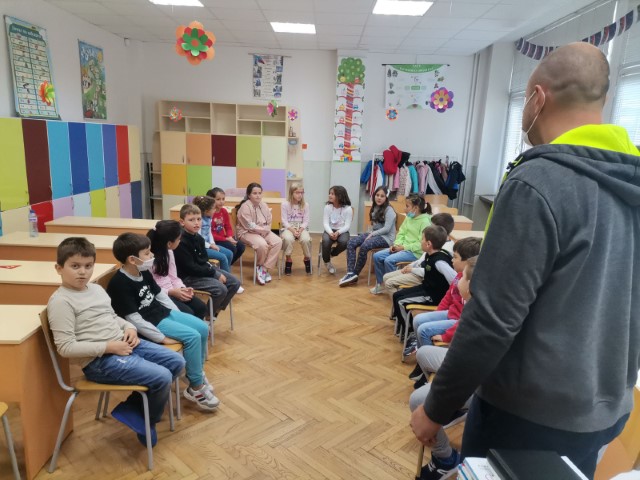
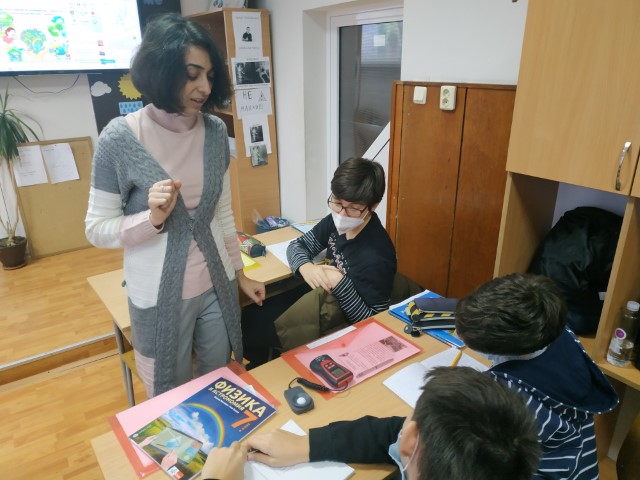
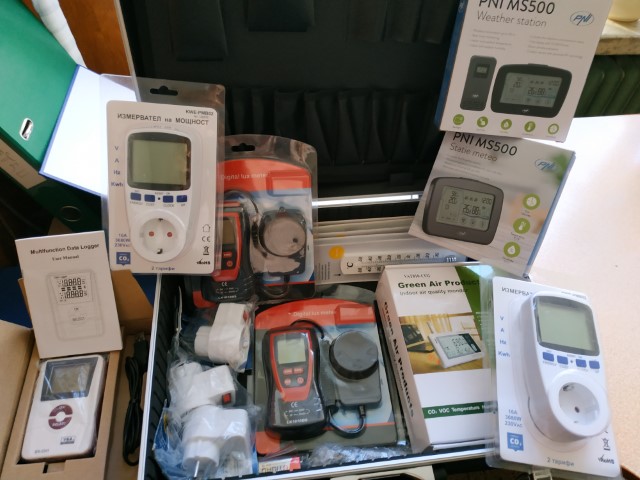
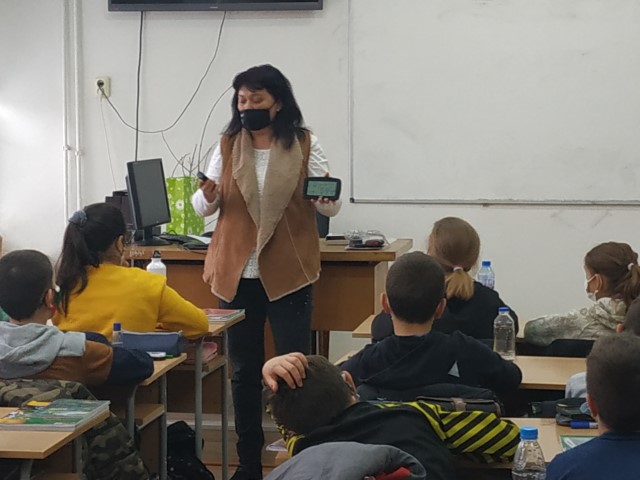
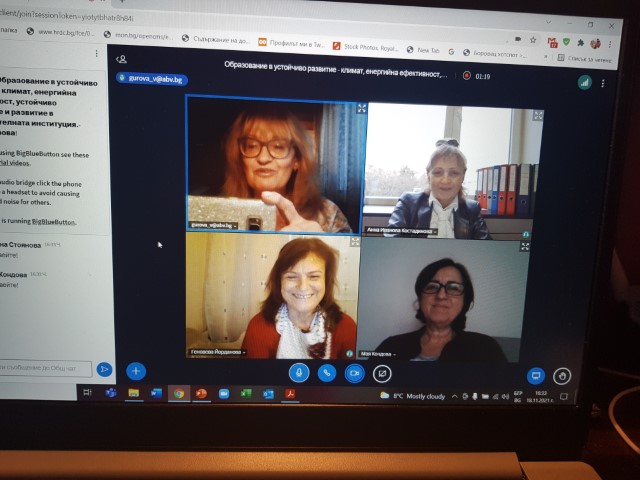
@Petko Rachov Slaveykov Secondary School, 2021
Content licensed to the European Union.